I test Atomium on my own experience and on my car.
Some time ago I came across Atomium engine oil additives on the Internet and was immediately completely skeptical. I did a small search on the Internet and could not find meaningful tests, everything seemed unconvincing to me.
So I had no choice but to test the Atomium myself. I tried Atomium on my own machine and I will tell you about it.
The result looks very funny and interesting. I tested Atomium Active Plus diesel engine oil additive.
I didn’t even know about it a while ago, I haven’t seen or read any video or anything else.
Some bloggers who have tried other Atomium additives have gotten pretty positive results. However, I wasn’t convinced and it also made me a bit skeptical about it, so I really wanted to try Atomium myself.
This additive promises lower fuel consumption and greater engine performance, eliminates oil carbon monoxide and restores rubbing surfaces simply by adding Atomium to the oil. Imagine that rubbing parts in the engine are restored when you just drive your car. The manufacturer assures that engine life is more than doubled.
I have not seen such promises anywhere or from any manufacturer.
That’s why I went to a service station to test this properly. I also had the advantage of being able to check the fuel consumption not in real driving conditions, but on a special bench, with maximum accuracy.
In real conditions it is not always easy to do this, as the road can be different, with different driving speeds, gradients or hills, stops and so on.
Here on the bench we were able to just set a certain speed and then see on the on-board computer what the fuel consumption was showing us.
And I did that before we add the additive to the engine oil and then again after pouring the Atomium additive in.
Of course, it’s not that simple. The instructions in Atomium say that the flow rate does not change immediately after adding the additive in the first step of application.
You add it to the oil, drive for a little less than 1000 kilometers. And then an oil change follows.
Once we have changed the oil, we pour in a second can of Atomium and drive with it again.
After a few hundred kilometers, I had to take another close look at what this additive is supposed to do and what it did.
How does it work?
In a can of Atomium you can see the minerals at the bottom, they should be in the form of sludge, that do all the work. Among other things, they also remove the dirt in the engine, remove it, probably like fine sandpaper, and make a tiny layer of these secret minerals on the rubbing surfaces and restore and protect them.
There are videos on the internet about exactly how things happen in the engine. I don’t know, but the important thing to me is not how it works. It’s whether it works at all. I think you know what I mean.
That’s why I tested all this stuff here and just see if it works or not.
After putting the car on the stand, I just set the car to a fixed speed, cruise control set to fixed speed in the on-board computer and then do the whole testing procedure.
For me, this test took several weeks. It all took place at a small service station, on a test stand. On my car. Yes, it is not new, but quite in satisfactory condition – Audi 2.0 TDI with a mileage of more than 230 thousand kilometers.
Fuel Consumption.
I would call this challenge – for those wondering how to restore a car to its original condition. Restore it. Without having to visit a car service or a service station.
I just accelerated to 100 km/h on the stand, and then the car was just left to drive at 100 km/h.
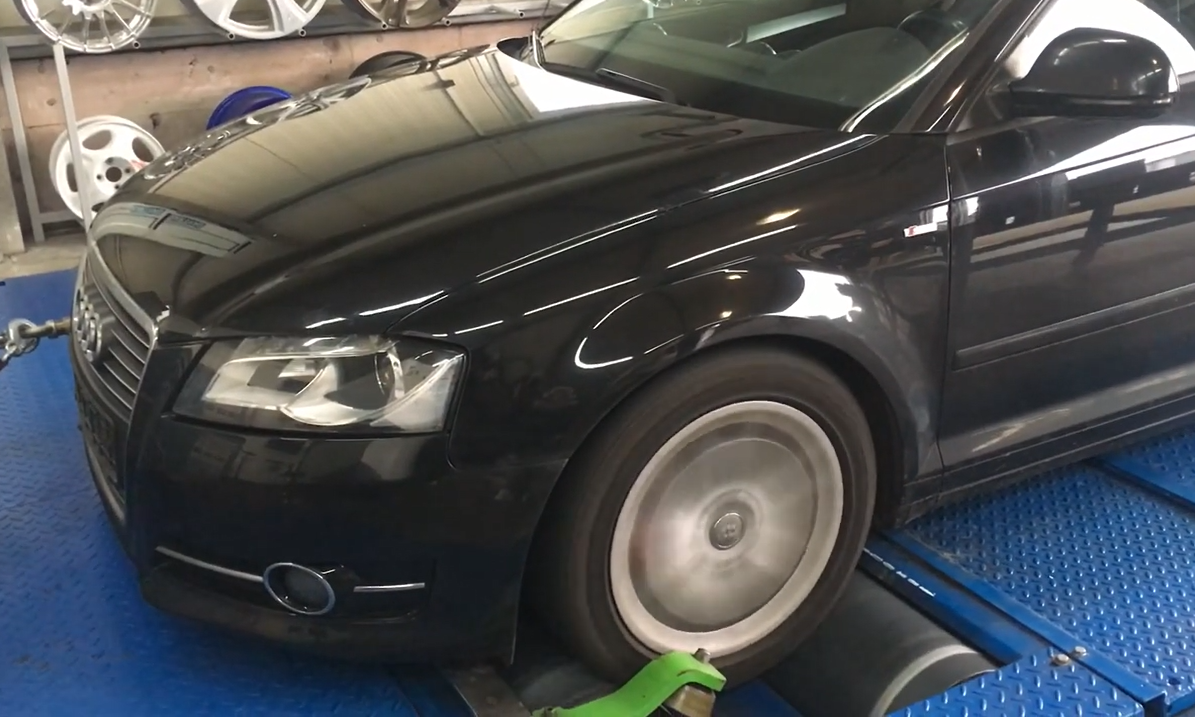
Having reached a speed of 100 km/h in sixth gear, I set the cruise control and the display shows that the fuel consumption is 2.9 liters per 100 kilometers. Let’s remember this value.

And yes, it’s important to note that it’s so low because we didn’t drive on the road, we don’t have the road surface resistance that you normally have on the road and all the other factors. That’s why we got that kind of consumption.
Engine noise level.
The engine has long since warmed up and is loud at idle. I set up a microphone to measure the noise level. At this point I marked the location of the data measurement. The next time I did it at the same location.
The value was about 85. Then let’s compare it to the new value, after pouring Atomium.

Thus, the value was constantly fluctuating around 85. I memorized the position of the instrument so that I could put the instrument in that place later.
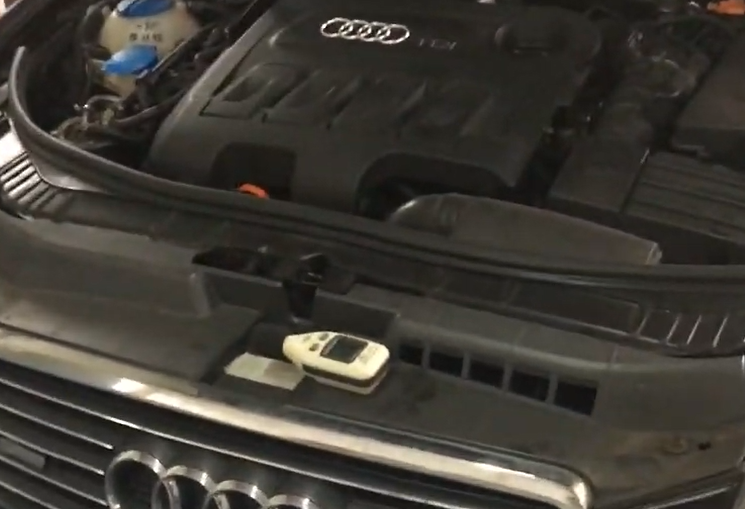
Fill it with Atomium, an engine oil additive.
We had already observed all the engine performance parameters on the bench, except for the compression measurement in the engine cylinders, all the measurements are done, and I was able to pour the Atomium. And, of course, shook the jar well.
In the beginning, the minerals settle out. All the minerals settle out. I shook the jar so well that the minerals are now in the liquid.
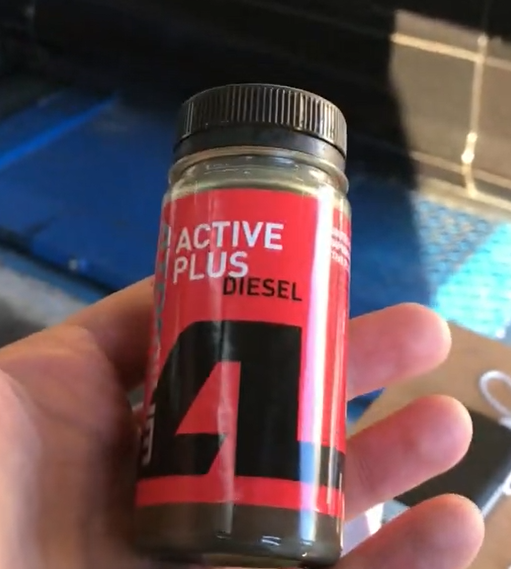
After 1000km of mileage it was time for our oil change. I was really very curious about what it would bring us. What’s your opinion? So make your guesses before my story comes to an end.
With great curiosity, I added a bottle of Atomium to the oil. Added it to meet my car after 1,000 kilometers on the stand.
I even replaced the oil filter during the oil change. For me, the time passed unnoticed and very quickly.
Being within 1000 kilometers after adding the first can of Atomium, I moved on to the second stage. I poured in our second Atomium additive.
I gave it a good shake so that everything dissolved well in the fluid, all the minerals. So if you are using Atomium, be sure to shake the jar. Now I poured in the second bottle.

First results of the experiment.
Yes, I was really very interested to see what results we would achieve. Really wanted to see if it would work. The second bottle is completely filled. Did I notice a difference?
At the time, I hadn’t noticed anything. Maybe maybe some quieter sounds and vibrations – got a little quieter in the interior of the car.
Will it make a difference when measuring the parameters? We’ll find out later.
I was more curious as to what we would find out at the end of the week. I returned to the test bench, where the car had already covered 1,000 kilometers.
And so, I started comparing all the stats to see if there was any change, what had changed in the situation.
The first thing I noticed was that the engine was quieter. The engine was running and warmed up, same conditions as last time. The instrument was in the same position last time. I put the microphone in the same position as last time. And then I clearly saw the first result, namely that we were able to lower the sound by a few decibels than before!
The values were around 85. Now it became about 76, yes!

It’s amazing, so something did happen. And it felt like not only the noise was reduced, but also the overall vibration in the interior of the car.
I turned the engine off, and I turned it back on. So I really didn’t think there would be an effect by a few decibels. But how did it happen? Apparently by reducing friction on the rubbing surfaces, there was a reduction in whole car vibration and overall noise. Maybe by improving compression in the engine, I don’t know. Apparently something did happen.
In the fuel consumption comparison, the data is also different. I think this is definitely a plus, so now let’s look at fuel consumption.
And now the car has been at 100 km/h for some time, we looked at the display and we saw that we have not a big difference – 2.7 liters per 100 km, so nothing has changed much.
It was 2.9 liters – it became 2.7 liters per 100 km. That’s a saving of less than 10%. Perhaps, in real driving conditions, this figure will increase, but we do not know it yet. We write only what we have seen ourselves.

This is getting interesting.
Finally, let’s look at performance again. To do that, we’re going to do a normal test now, and then we’re going to look at the actual data charts on the bench.
So, guys, we’ve run the engine performance test on the computer and I can’t believe it myself. And it can’t be a measurement error!
We had a power figure value of 108 kW before, and now we are seeing 113 kW!
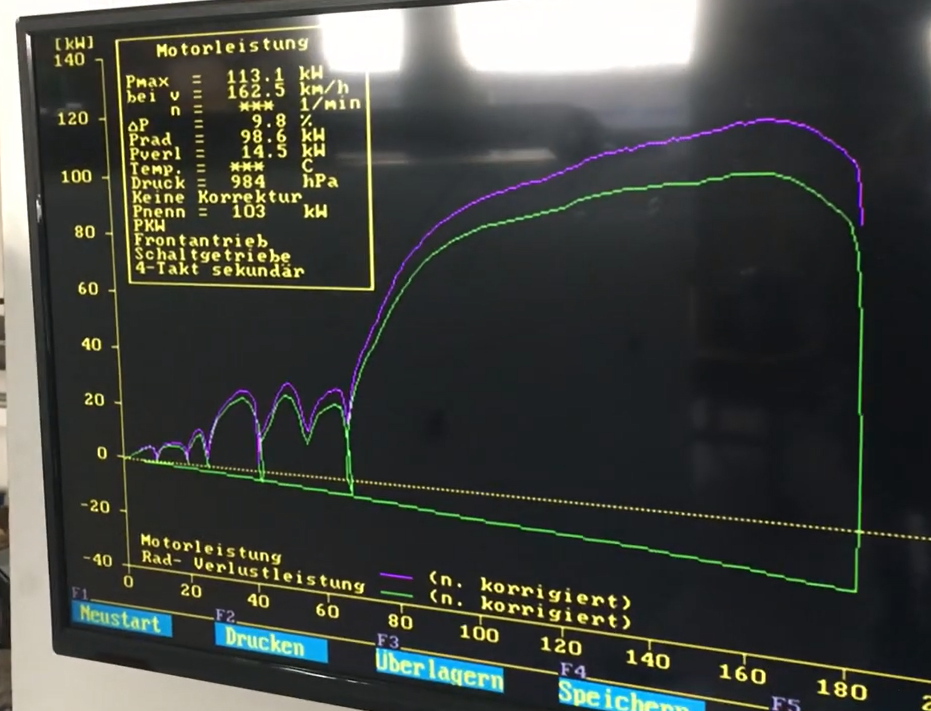
It’s just really amazing! Atomium definitely did something to our engine here.
Next, I did a second test, took the data off the computer, and then compared the measurement charts before and after the Atomium pour. Our goal in this case was to get engine torque data. You probably want to know my thoughts on this, don’t you?
At first glance, I couldn’t even believe it. And right now I can hardly see how adding two bottles of Atomium could make such a difference.
I took another look at the torque chart. The comparison is really amazing, so guys, it worked! See for yourself in the photo. How does it all work!? It’s amazing! It’s unbelievable!
I don’t know the answers, I am not a techie, but I did measure tangible differences. We can look at these graphs, one graph before using Atomium and one graph after using Atomium .
And so we have 2 charts for comparison.
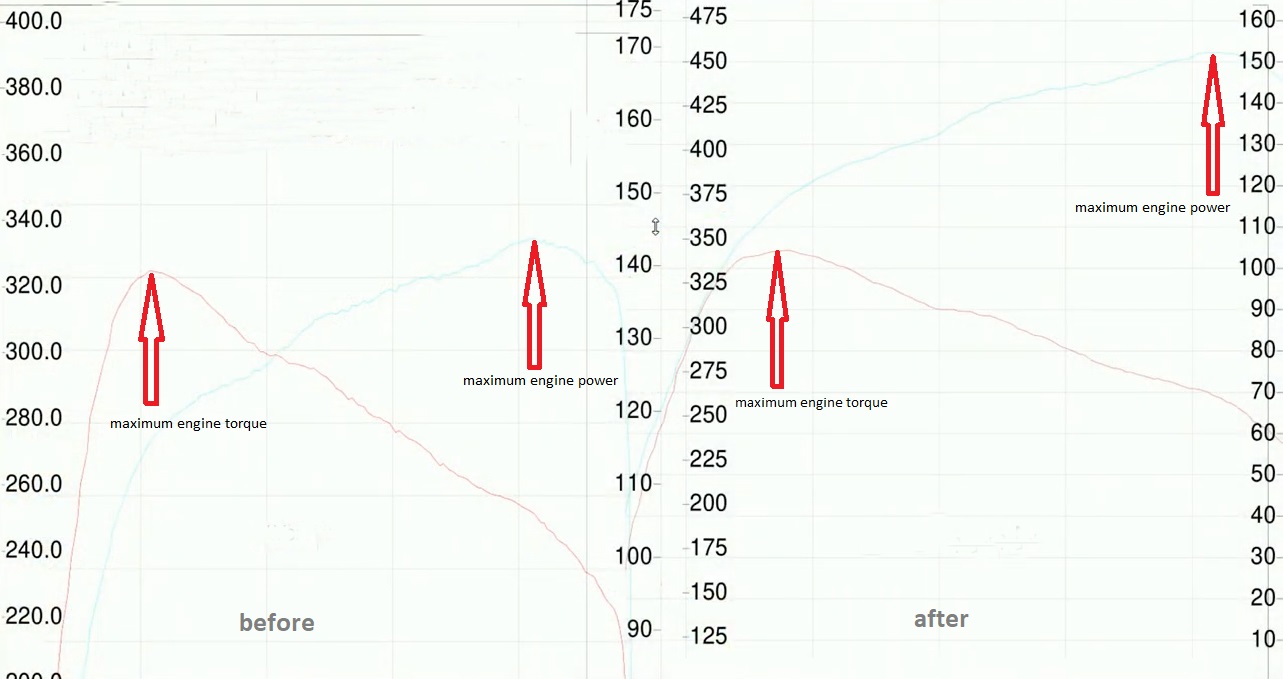
Let’s look at them now: the red line is torque, the blue line is horsepower. On the right scale are the values in horsepower.
After the whole test, we have a torque of about 330-340!!! Unbelievable!
There’s something here that I can’t pinpoint exactly, but we measured the engine power from 152 to 153 horsepower. So something has definitely changed! And we were able to determine and measure that.
There is definitely a measurable difference and the fact that things are working that way.
Myself and the rest of the service station staff, we were all amazed when we saw the measurements.
That’s why we really wanted multiple measurements, just to make sure we didn’t make a mistake.
The experiment worked. What’s the result?
We ended up with more power, and at the same time we got a quieter engine.
Fuel consumption, according to our measurements, decreased slightly, less than 10% but, already now, after the experiment this value increases in the real use of the car on the road, not on the test bench. I will write about it in another article.
But the fact that we see even these results means that I got a quieter engine, less vibration and increased power – that’s positive and amazing!
I find it great either way and I’m glad I did the experiment myself!
Just to be able to share my results online with other people who will now try to do something similar with their car.
Of course, you can also test all of this yourself and see if it works for you. Test it yourself and see if it works for you and works for you.
I have to say that either way, if I hadn’t taken any measurements, I would have still noticed that the car picked up speed faster and was much quieter.
But it’s good to get it all measured. I guess these results will be different for each car. Give it a try and post your results in the comments.
My car is still in pretty good condition, but if you have a car that may no longer have the manufacturer’s standard specs, I’m sure my experience could also be helpful, so I hope this test helped you in some way.
If so, I would certainly be delighted to hear from you!
Thank you for your attention!
From the editors. Dear readers, bloggers, car enthusiasts!
If you have your own story on the use of engine oil additives,
or other additives for automobile, write us.
We will certainly place your material on the pages of our site. Thank you.






